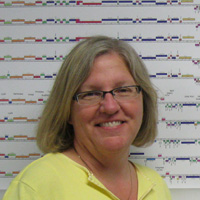Welcome to the forums at seaphages.org. Please feel free to ask any questions related to the SEA-PHAGES program. Any logged-in user may post new topics and reply to existing topics. If you'd like to see a new forum created, please contact us using our form or email us at info@seaphages.org.
Recent Activity
All posts created by debbie
| Link to this post | posted 14 Jun, 2023 18:16 | |
|---|---|
|
|
Please Read! https://pubmed.ncbi.nlm.nih.gov/24335314/ |
| Link to this post | posted 07 Jun, 2023 23:30 | |
|---|---|
|
|
Rick, I think that this version of TAC matches L5's -1 frameshift. https://seaphagesbioinformatics.helpdocsonline.com/article-54 G_GG.G_GA. Wanna check? debbie |
Posted in: Cluster EA Annotation Tips → frame shift
| Link to this post | posted 07 Jun, 2023 20:23 | |
|---|---|
|
|
Lee, The confusing part of Kathleen's post is the sentence that states "But we don't understand why Starterator didn't call the most annotated start." But she is here today so we are able to discuss. The reason that Starterator doesn't make the right call is becuase it only reports what is in in the files submitted to phamerator. –Meaning in this particular case, Frankenweenie's auto-annotated is not what others ID'd as the best start to call. In fact, Kathleen and her students went to Starterator to justify making a change. That sentence in Starterator is to be coupled with the yellow line in the Frankenweenie graph and recogonized as in DRAFT form. What Kathleen and her students wanted was for Starterator to make the right call. Technically, it makes NO calls and just reports what was called (making human calls green and auto calls yellow). |
| Link to this post | posted 06 Jun, 2023 02:55 | |
|---|---|
|
|
Hi all, There are (were) 2 strains of Arthrobacter globiformis from NRRL at Pitt that got distributed as A. globiformis NRRL B- 2979 SEA. They are A. globiformis NRRL B- 2979 SEA and A. globiformis NRRL B-2880 SEA. It is believed that one of the errors occurred in Spring shipments of 2019. However, we can't be sure, so we are asking that all A. globi strains be tested. Both strains have been sequenced and primers are designed to detect each strain. Protocol is attached here. First step is that if you have A. globiformis at your institution, please verify which one you have using the attached protocol. Second step, check phagesDB that all phages found on that strain are entered correctly. If not please make changes. If the number of phage hosts to be changed is small, use "Modify Phage" to correct. If you have many phage hosts to correct, you can send Dan (dar78@pitt.edu) a message to get the entries changed in bulk. Please send an email to inof@seaphages.org with your questions. Thanks! debbie |
| Link to this post | posted 06 Jun, 2023 01:20 | |
|---|---|
|
|
I agree it is not enough yet. but good to make the post. debbie |
| Link to this post | posted 04 Jun, 2023 17:18 | |
|---|---|
|
|
Dan, What kind of images? Do you mean the plaque or EM pic on phagesDB or something else? debbie |
Posted in: Data Upload Questions → Image file size
| Link to this post | posted 02 Jun, 2023 00:26 | |
|---|---|
|
|
Fred, the program needs to update to get to the right version for setting preferences. if the progam isn't avilable at cobamide…. Go the DNA master page on phagesDB. Click on the word "here" in the second sentence to download the install program. debbie |
Posted in: DNA Master → DNA Master Preferences Issue
| Link to this post | posted 01 Jun, 2023 02:18 | |
|---|---|
|
|
Hi Martin, Are you on a mac or pc? Do you have excel? iI you do not, uncheck the load into excel box and see if that works. if not, send your .dnam5 files to me. debbie |
Posted in: DNA Master → Can´t make profile
| Link to this post | posted 01 Jun, 2023 01:54 | |
|---|---|
|
|
Hi Martin, The final file is a correctly formatted .dnam5 file. It is not a "profile". What file are you working with? Here is the final file submission instructions. https://seaphagesbioinformatics.helpdocsonline.com/article-49 Once I know what you are working with i ca help more. debbie |
Posted in: DNA Master → Can´t make profile
| Link to this post | posted 31 May, 2023 22:31 | |
|---|---|
|
|
What you did was not wrong. It is good we do things different, though it may seem confusing. I look for the most basic structural genes in every phage and when I am missing what I expect to find, I just look elsewhere. debbie |


 1.01Mb
1.01Mb